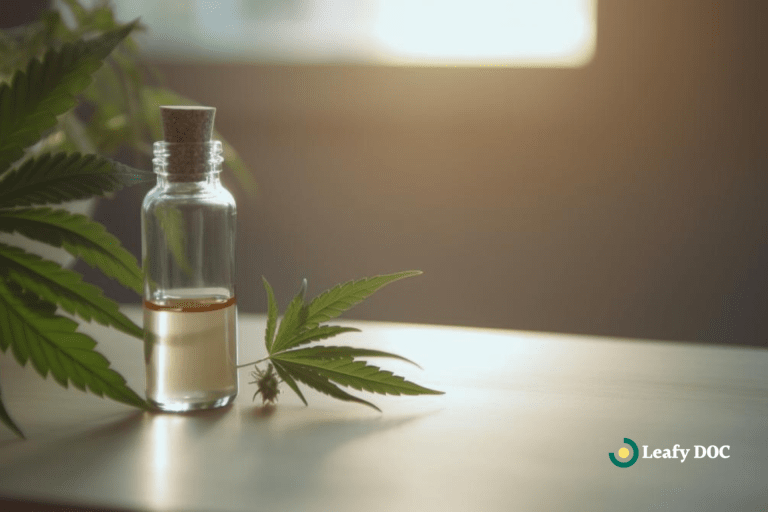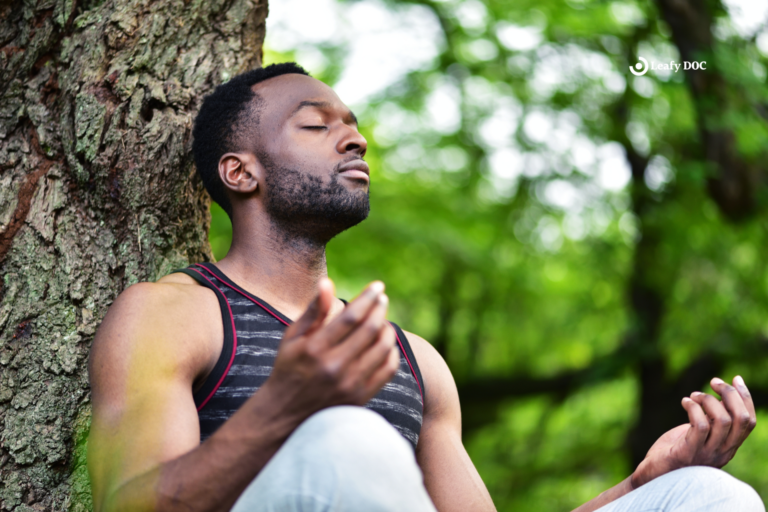Vaginismus
Can medical cannabis help people with this condition? Find out more below.
What is Vaginismus?
Vaginismus is characterized by involuntary spasms or contractions of the pelvic floor muscles. It can make it difficult for someone with a vagina to have penetrative sex, use tampons, or undergo a pelvic exam. The contractions can cause pain, discomfort, and tightness in the vaginal area, leading to anxiety and fear around sexual activity.
What causes it?
The exact causes of vaginismus are not fully understood, but several factors may contribute to the condition. Psychological factors such as anxiety, trauma, and negative experiences with sex can play a role, as can physical factors such as infections, menopause, and certain medical conditions. Some people may also develop vaginismus as a response to pain during sex, which can cause them to tense up and develop muscle spasms.
How common is it?
Vaginismus is estimated to affect between 1% and 7% of people with vaginas, although the exact prevalence is difficult to determine due to underreporting and stigma surrounding the condition. It can occur at any age but is most commonly diagnosed in people in their 20s and 30s.
Are there types/stages?
There are different ways to categorize vaginismus, but some common types and stages include the following:
- Primary vaginismus: This refers to vaginismus that occurs from the first attempt at penetration, often making it difficult or impossible for someone to have intercourse.
- Secondary vaginismus: This type of vaginismus develops after someone has been able to have intercourse before but then experiences pain or discomfort that leads to muscle spasms.
- Global vaginismus: This type of vaginismus affects all situations involving penetration, such as sex, tampon use, and pelvic exams.
- Situational vaginismus: This type only occurs in certain situations or with specific partners.
- Mild, moderate, and severe vaginismus: These terms describe the intensity and frequency of muscle spasms, with mild vaginismus causing minimal discomfort and severe vaginismus making penetration impossible.
Not everyone with vaginismus will fit neatly into these categories, and treatment approaches may vary depending on the individual’s specific symptoms and experiences.
Signs & Symptoms
The signs and symptoms of vaginismus can vary from person to person, but common ones include the following:
- Involuntary tightening or spasming of the vaginal muscles in response to attempted penetration, such as during sex, tampon use, or a pelvic exam.
- Pain or discomfort during attempts at penetration, which may range from mild to severe.
- Fear, anxiety, or avoidance of sexual activity or other penetration situations.
- Difficulty inserting a tampon or undergoing a pelvic exam due to muscle tension and pain.
- Reduced sexual desire or enjoyment due to the fear and pain associated with penetration.
Occasional pain or discomfort during sex does not necessarily mean that someone has vaginismus. However, suppose the pain or discomfort is persistent and interferes with daily activities or sexual relationships. In that case, it may be a sign of vaginismus and should be evaluated by a healthcare provider.
Diagnosis & Treatment
The diagnosis of vaginismus involves a thorough evaluation by a healthcare provider, usually a gynecologist, who will review the patient’s medical history and symptoms and conduct a physical exam. The provider may also ask about the patient’s sexual history, psychological factors, and past traumatic experiences. Additional testing, such as a pelvic ultrasound or cultures for sexually transmitted infections, may be performed to rule out other potential causes of the symptoms.
Treatment for vaginismus typically involves a combination of physical therapy, counseling, and self-help techniques. Treatment goals are to reduce muscle tension and pain, increase sexual comfort and confidence, and improve communication and intimacy with sexual partners.
Physical therapy: Pelvic floor physical therapy can help individuals with vaginismus learn how to relax and control their pelvic muscles, which can reduce pain and tension during penetration. This may involve exercises to stretch and strengthen the pelvic muscles and biofeedback techniques to help patients learn to control muscle tension.
Counseling: Cognitive-behavioral therapy (CBT) or other forms of talk therapy can help patients address psychological factors contributing to vaginismus, such as anxiety, negative attitudes toward sex, or past trauma. Therapy can also help patients develop coping skills and communication strategies to improve sexual relationships.
Self-help techniques: Patients with vaginismus may also benefit from dilators or other devices to gradually and comfortably stretch the vaginal muscles gradually and comfortably over time. This can help reduce pain and improve comfort during penetration. Also, relaxation techniques, such as deep breathing or meditation, can help reduce muscle tension and anxiety during sexual activity.
Medication such as topical anesthetics or muscle relaxants may be prescribed to help reduce pain or muscle tension during penetration. However, medication alone is typically not sufficient to treat vaginismus.
The most effective treatment approach will depend on the individual’s specific symptoms, experiences, and needs and may involve physical therapy, counseling, and self-help techniques. Many people with vaginismus can overcome their symptoms with appropriate treatment and enjoy fulfilling sexual relationships.
Can medical cannabis help?
There is limited research on the use of medical cannabis to treat vaginismus specifically. However, cannabis and its derivatives have been studied for their potential to alleviate chronic pain, anxiety, and muscle spasticity, all symptoms associated with vaginismus.
Some studies suggest that medical cannabis may help reduce pain and muscle spasticity in conditions such as multiple sclerosis and spinal cord injury. Some people with chronic pain or anxiety have reported that cannabis products have helped alleviate their symptoms.
Here are some brief details on studies that have examined the potential benefits of medical cannabis for pain, anxiety, and muscle spasticity:
- Pain: A 2015 systematic review of clinical trials found that medical cannabis effectively reduced adult chronic pain, including neuropathic and spasticity-related pain. A 2018 study of patients with chronic pain found that cannabis use was associated with significant reductions in pain intensity and opioid use.
- Anxiety: There is some evidence to suggest that cannabis may help alleviate symptoms of anxiety, although the results have been mixed. A 2019 systematic review found that some studies reported reduced anxiety symptoms with cannabis use, while others found no effect or increased anxiety.
- Muscle spasticity: Several studies have suggested that cannabis may help reduce muscle spasticity and improve mobility in conditions such as multiple sclerosis and spinal cord injury. For example, a 2012 systematic review of clinical trials found that cannabis-based medicines effectively reduced spasticity and muscle spasms in patients with multiple sclerosis.
Last Updated: June 14, 2024
Get Your Medical Card
Connect with a licensed physician online in minutes
Table of Contents
Keep Reading
-
Exploring The Benefits Of Medical Marijuana For Patients’ Access
Unlock the power of medical marijuana to improve patients’ access and transform healthcare. Explore the surprising benefits of medical marijuana now! Click here for a game-changing perspective on healthcare.
-
Incorporating Medical Marijuana into Your Wellness Routine: Yoga, Meditation, and More
Discover how to incorporate medical marijuana into your wellness routine with our guide. Learn about alternative ways to use cannabis for relaxation, stress relief, and more.
-
What Are Good Companion Plants For Cannabis?
Looking to grow cannabis? Learn how to boost your yield and deter pests with these perfect companion plants, including chamomile. Click now for expert tips!



